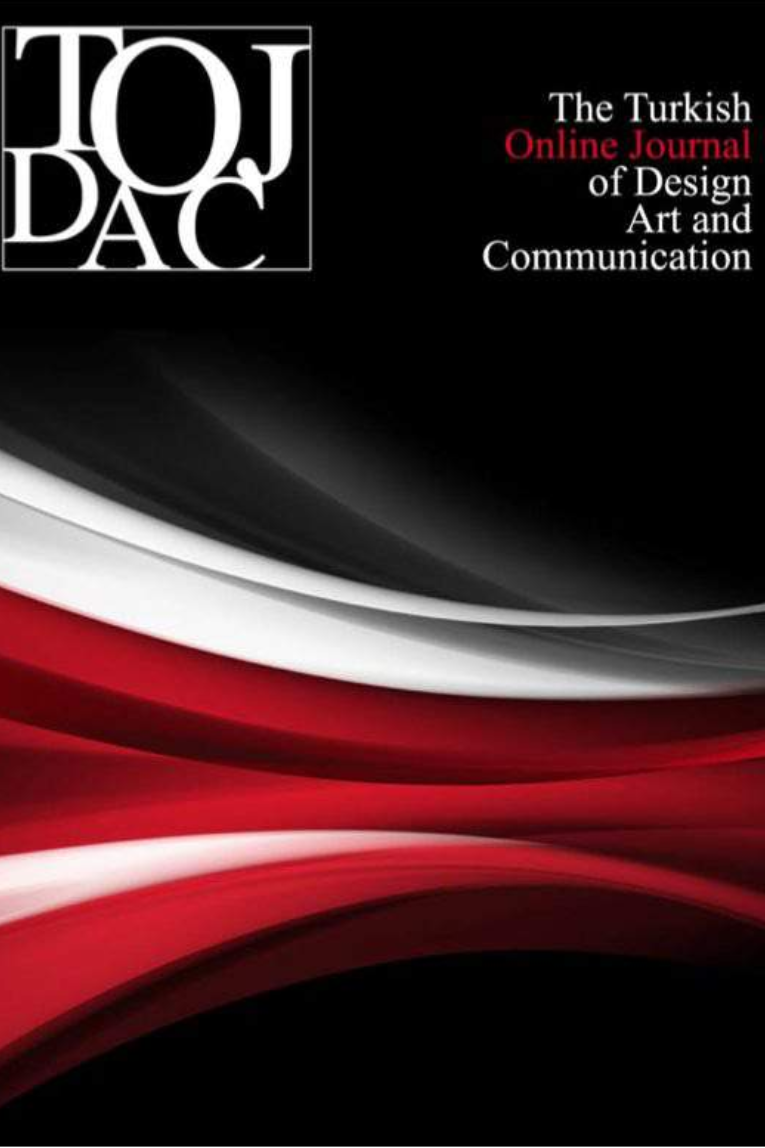NEW MEDIA PRACTICES IN IRAN: A MIXED METHODS STUDY
The aim of the study is to reveal the current state of Iran, which has more different structures thanother countries in terms of political, social and cultural, in the new media area. In the study, a mixedmethods research was conducted to reveal the existing situation and the mixed methods convergentparallel design was used in the research. The interview method, one of the qualitative researchmethods and the survey, one of the quantitative reasrch methods were used in the research. The sampleof the interview method is a senior official at the Ankara Embassy of Iran, who is selected by means ofpurposive sampling. The sample of the survey is 124 Iranian people, who are selected by means ofpurposive sampling method. According to the results obtained from the analysis of research data, thereare some restrictions in the new media environment in Iran, but most of the internet sites and socialnetworks can be accessible is in general. Restrictions of the Internet and new media in Iran are beingimplemented because of the ethical reasons, insecurity about foreign countries and the willingness ofthe country's government to prevent or control opponents. Despite partial restrictions, most of theIranian population access the internet and highly use the platforms of this virtual network.
Anahtar Kelimeler:
New Media, Iran, Qualitative Research, Quantitative Research, Mixed Methods Research
___
- Anderson, C. (2012). The Hidden Internet of Iran: Private Address Allocations on a National Network. Cornell University Library, https://arxiv.org/abs/1209.6398, Access Date: 17.12.2017. Aryan, S., Aryan, H., Halderman J. A. (2013). Internet Censorship in Iran: A First Look. Proceedings of the 3rd USENIX Workshop on Free and Open Communications on the Internet. Cable (2017). Study of Broadband Pricing in 196 Countries Reveals Vast Global Disparities in the Cost of Getting Online – UK Ranks 62nd Cheapest. https://www.cable.co.uk/mediacentre/ release/new-worldwide-broadband-price-league-unveiled/, Access Date: 01.11.2017. Creswell, J. W., Clark, V. L. P. (2015). Karma Yöntem Araştırmaları Tasarımı ve Yürütülmesi. Yüksel Dede ve Selçuk Beşir Demir (Çev.). Ankara: Anı Yayıncılık. Ghasemi, V., Rabiei, K., Davoodi, S., Rabiei, H. (2017). Mobile Internet Usage among Adolescents and Young Adults in Iran: A Sociological Survey. Journal of History Culture and Art Research, Vol 6, No. 1, p. 863-878. Grossman, L. (2009). Iran Protests: Twitter, the Medium of the Movement. http://content.time.com/time/world/article/0,8599,1905125,00.html, Access Date: 12.11.2017. International Telecommunication Union (2017). Measuring the Information Society Report. Volume 1, Switzerland. Iranonline (2017). Islamic Republic of Iran Constitution. http://www.iranonline.com/iran/iraninfo/ government/constitution.html, Access Date: 15.12.2017. Johnson, R. B., Onwuegbuzie, A. J., Turner, L. A. (2007). Toward a Definition of Mixed Methods Research. Journal of Mixed Methods Research, Vol 1, No 2, p. 112-133. Kamaladdin, N. (2017). İran İslam Cumhuriyeti’nde Çatışma Ortamı Olarak Sanal Ortam. Yeni Medya Hakemli Akademik E-Dergi, Vol 2, p. 53-67. Kashani, B. H., Kasmani, A. N., Sadipour, E., Soltanifar, M. (2017). Qualitative Study of Professionals’ Perspectives about Internet Public Policy in Iran. International Journal of Computer Science and Network Security, Vol 17, No 8, p. 235-245. Michaelsen, M. (2011). Linking up for Change: The Internet and Social Movements in Iran. N. C. Schneider and B. Gräf (Eds.). Social Dynamics 2.0: Researching Change in Times of Media Convergence: Case Studies from the Middle East and Asia (p. 105-126). Germany: Frank & Timme. Mostafalou, Y., Adnan, H. M. (2016). Oppositional Politics and the Internet in Iran: A Visual Semiotic Analysis of the Iranian Green Path Movement’s Website. Mediterranean Journal of Social Sciences, Vol 7, No 2, p. 113-126. Rahimi, B. (2003). Cyberdissent: The Internet in Revolutionary Iran. Middle East Review of International Affairs, Vol 7, No 3, p. 101-115. Tradingeconomics (2017). Iran Internet Speed. https://tradingeconomics.com/iran/internet-speed, Access Date: 19.09.2017. Wearesocial (2017). Digital in 2017: Southern Asia. https://digitalinasia.com/2017/02/01/digital-inasia- 2017-overview/, Access Date: 03.10.2017. Worldbank (2016). Islamic Republic of Iran, Individuals Using the Internet. http://databank.worldbank.org/data/Views/Reports/ReportWidgetCustom.aspx?Report_Name=Countr yProfile&Id=b450fd57&tbar=y&dd=y&inf=n&zm=n&country=IRN, Access Date: 16.12.2017.
- Başlangıç: 2011
- Yayıncı: Deniz YENGİN
Sayıdaki Diğer Makaleler
Cem Sefa SÜTCÜ, Çiğdem AYTEKİN
ANALYSIS OF THE EFFECT OF GLOBALIZATION USERS’ COLOR PREFERENCES OVER LIVING SPACE FURNITURE
KENTSEL AÇIK-YEŞİL ALANLARIN AYNILAŞMASI: KONYA ÖRNEĞİ
1990 SONRASI TÜRK SİNEMASINDA DIŞ GÖÇ FİLMLERİNDE TOPLUMSAL CİNSİYETİN SÖYLEMSEL İNŞASI
TASARIMIN KRİZİ YA DA KRİZ TASARIMININ ÖNEMİ ÜZERİNE BİR DURUM OKUMASI
GRAFİK BİR SEMBOL OLARAK ANADOLU SELÇUKLULARINDA ÇİFT BAŞLI KARTAL
Turan SAĞER, Günsu YILMA ŞAKALAR
KULLANICI-ÜRÜN ETKİLEŞİMİNİN ÇOK DUYULU DOĞASI: KÜÇÜK EV ALETLERİ ÜZERİNE BİR ÇALIŞMA
Merve COŞKUN, Bahar ŞENER PEDGLEY
